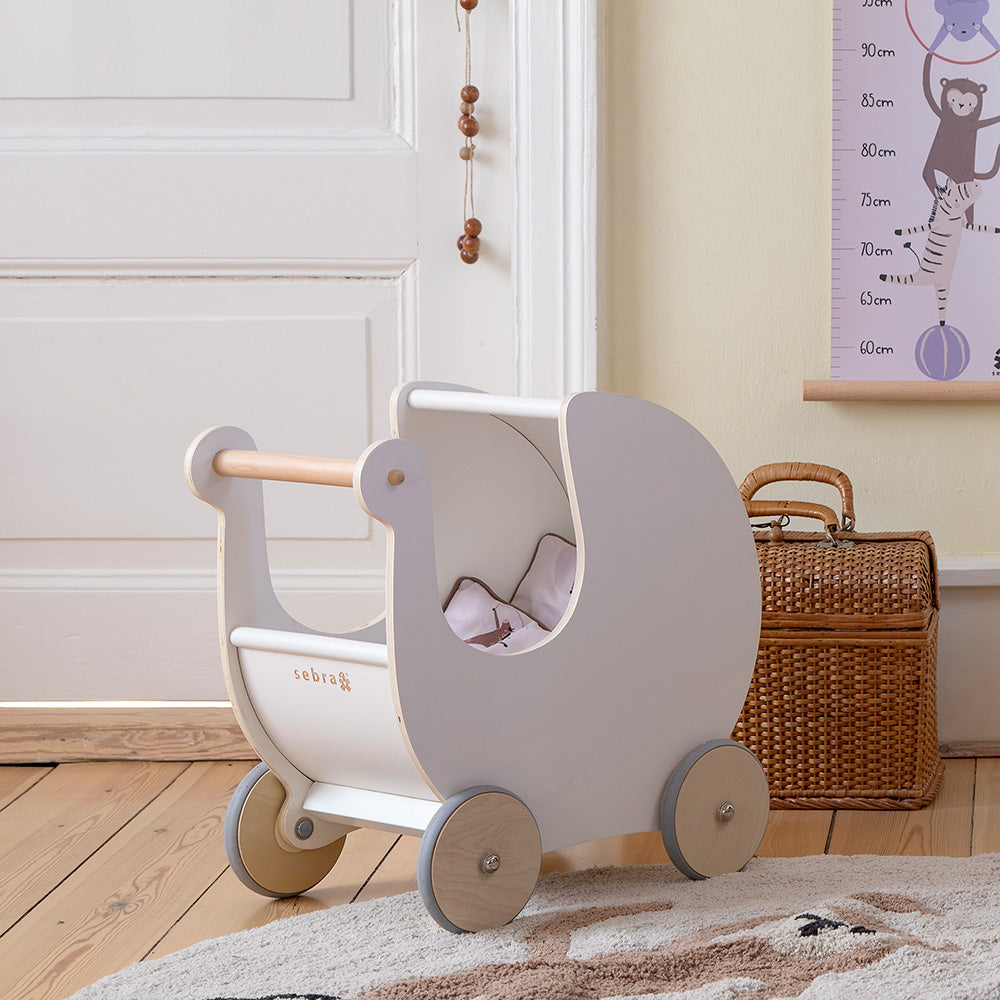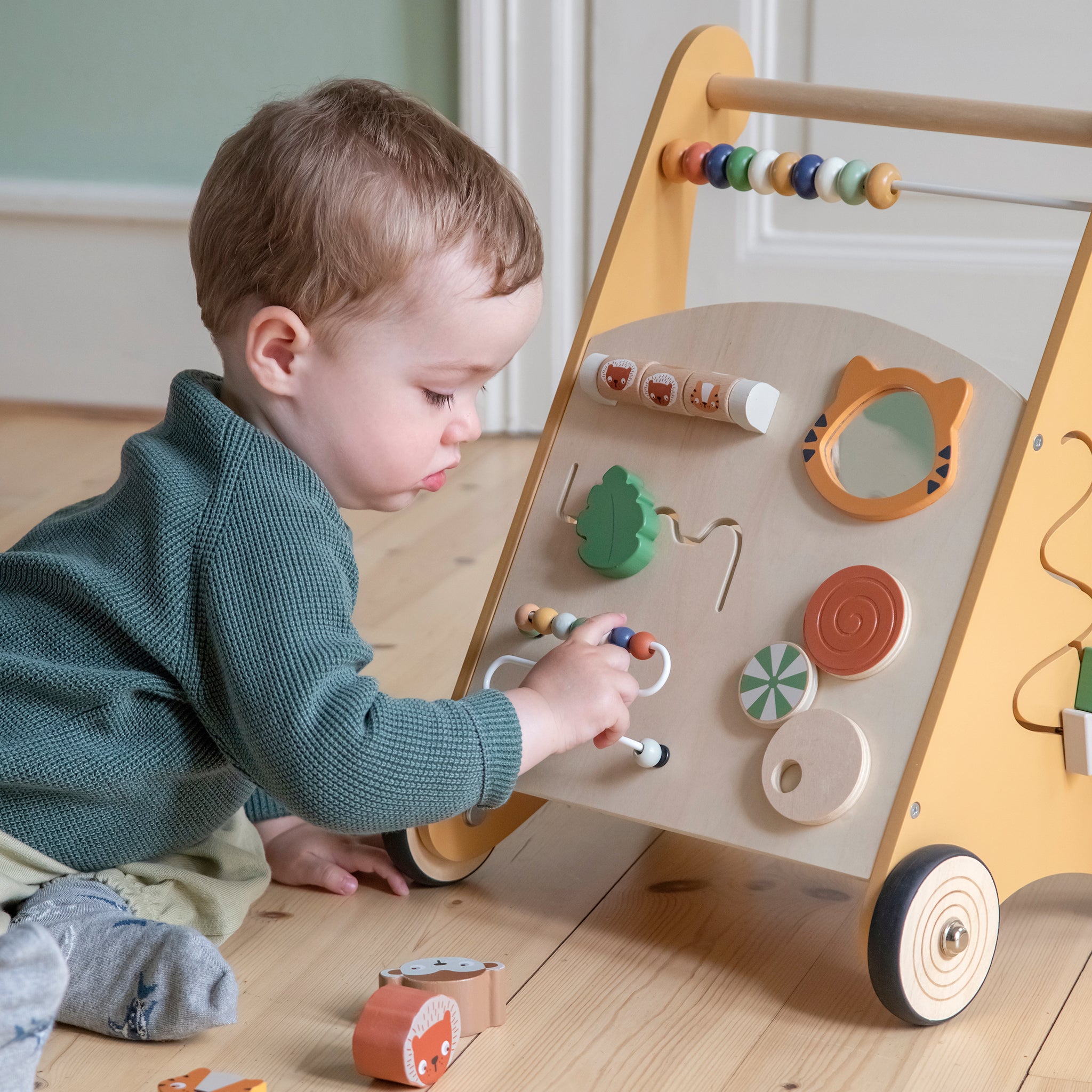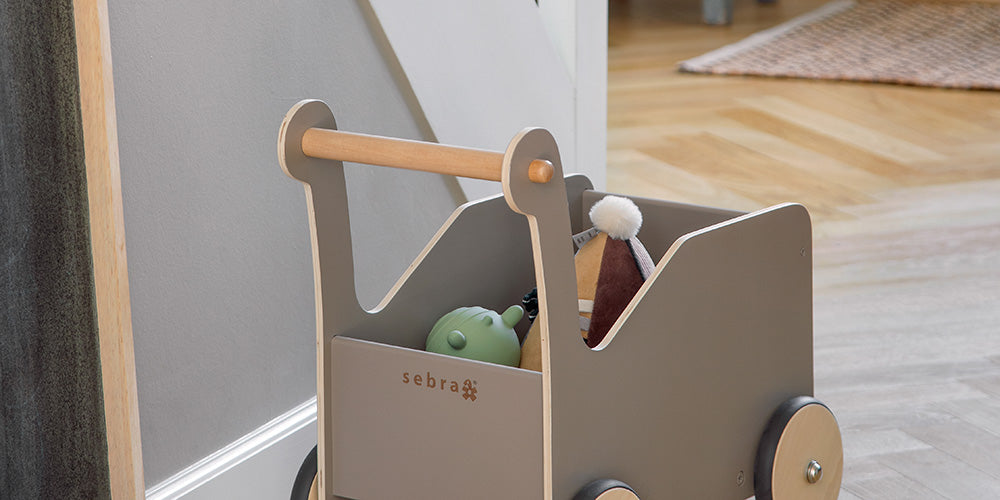"Furniture cruising"
At first, your baby will use anything reasonably stable for support, such as coffee tables or other furniture. Your baby becomes a little “furniture cruiser” with wobbly legs trying out a few sliding steps. “Furniture cruising” is the first step (literally) to mastering the art of walking on two legs.
You can support their development towards the first independent steps with a sturdy walker that your child can lean on when exploring the world. Using the baby walker strengthens the leg muscles and improves balance so that your child can eventually walk on their own.









